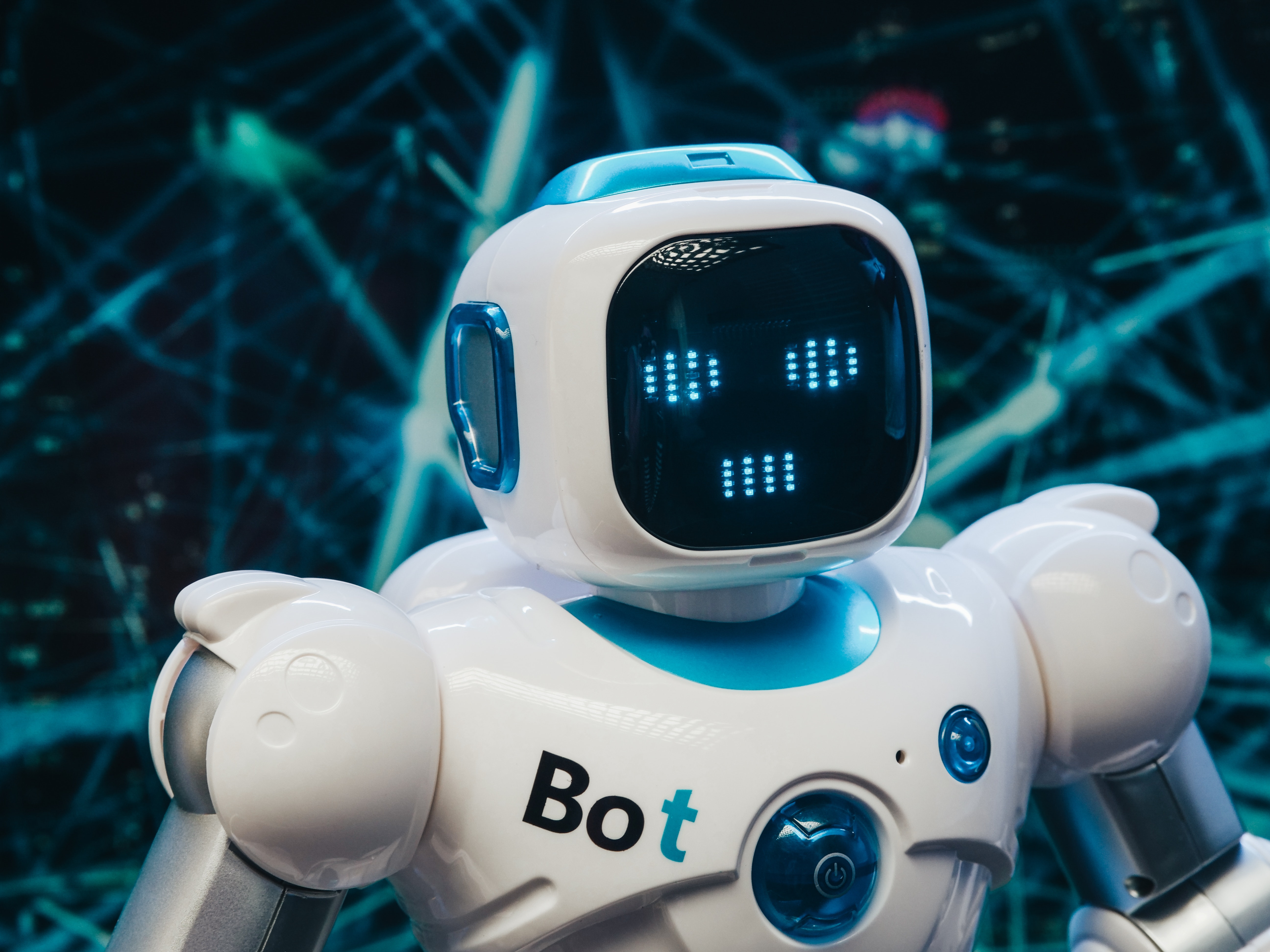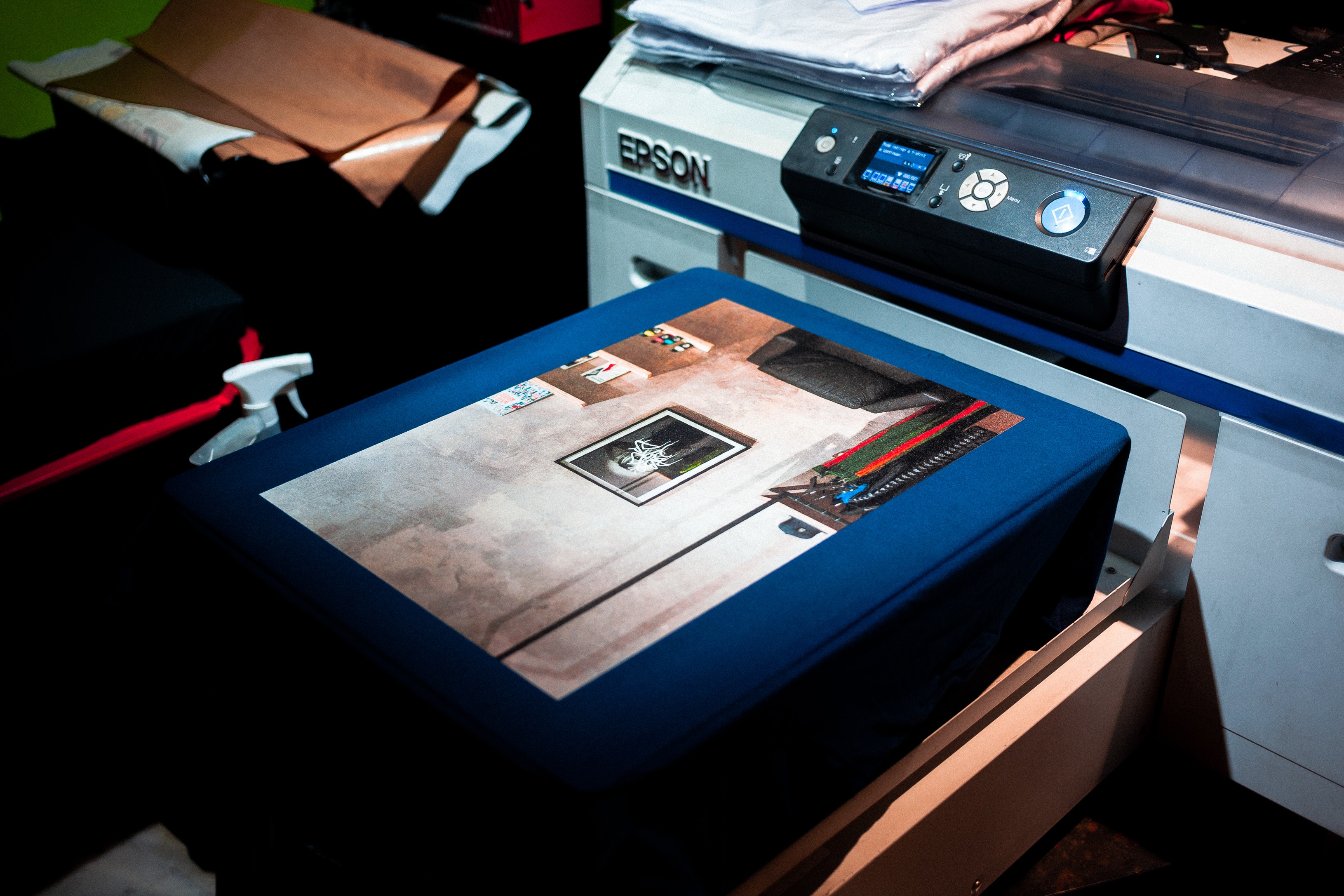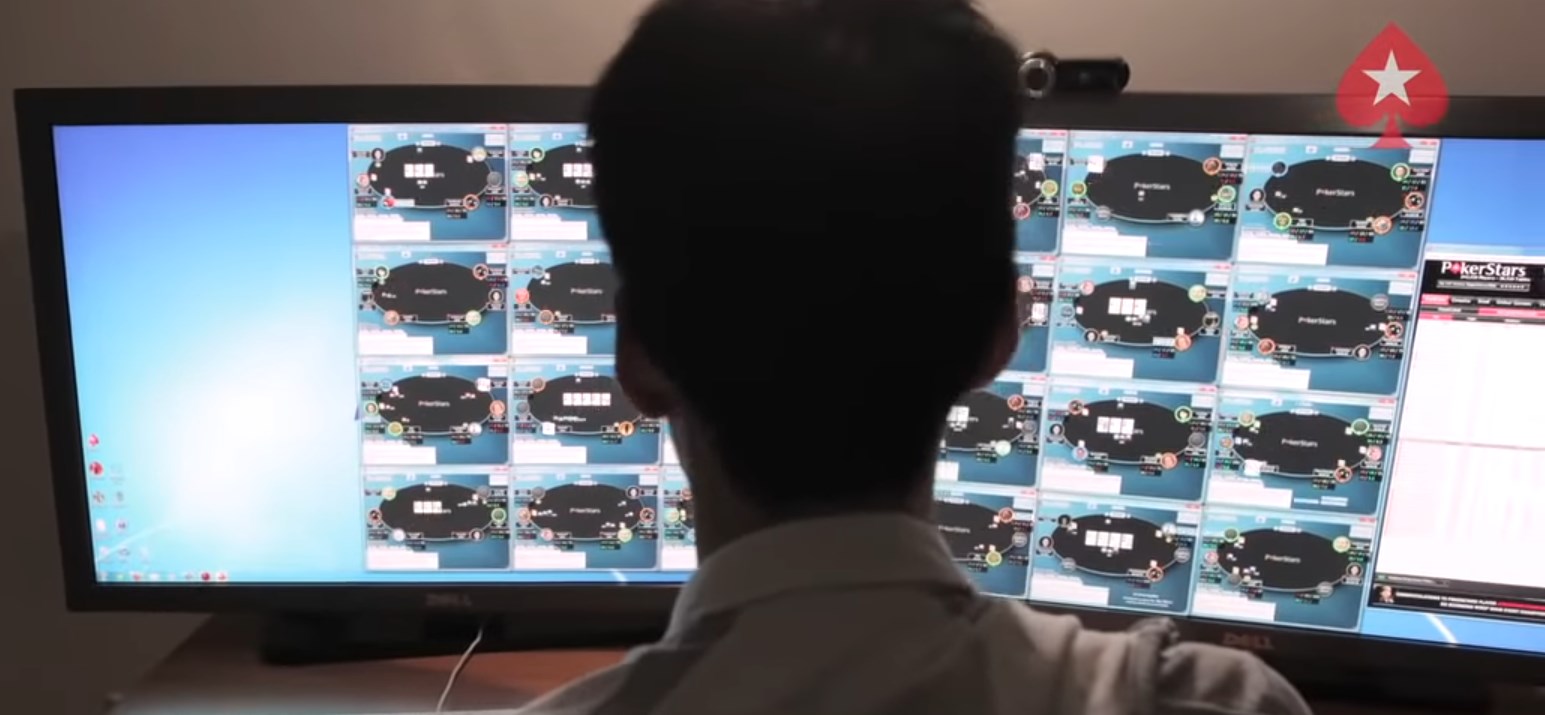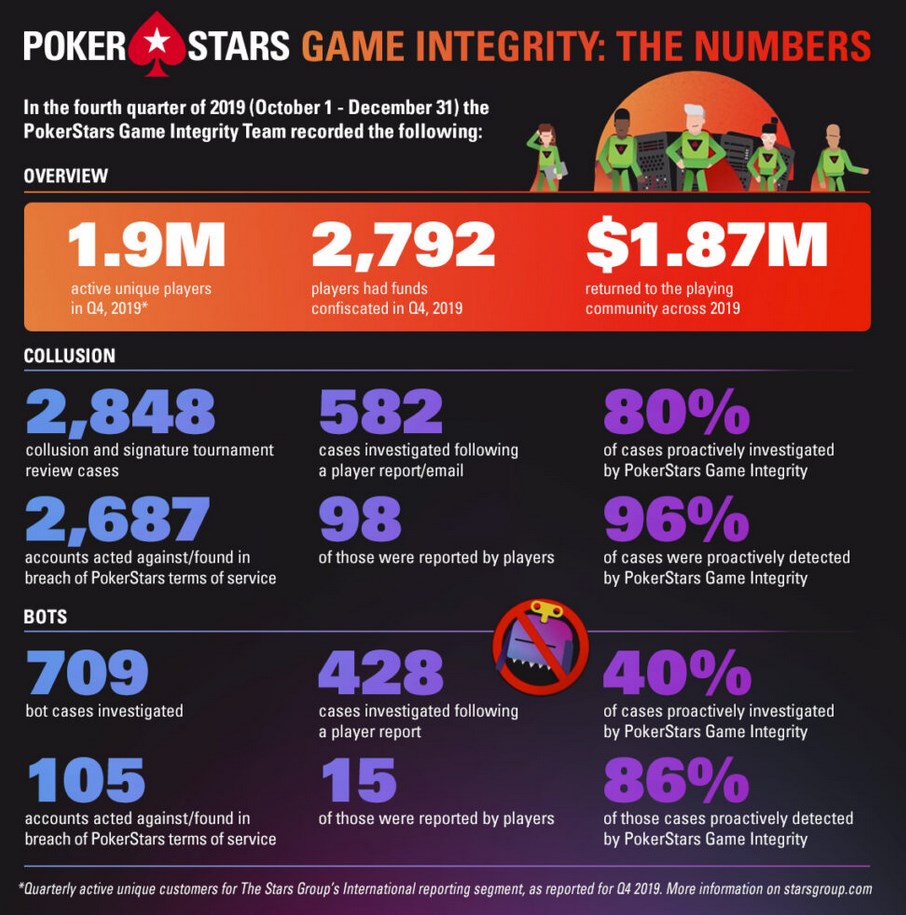Poker bots: how to recognize, how to fight and is it possible to win (p.1)?

Bots are the main threat to online poker. Such a statement 20 years ago caused only laughter, it looked too implausible. After 10 years, the spread of bots seemed like a matter of time. There have already been few cases of their use. In 2021, no one doubts either the existence of bots or their large number at the online poker table. Now, fighting AI fraudsters has become a daily routine and an important goal for poker rooms. If the victory remains with the bots, then poker in the internet is about to crash. In this article, we will consider the topic of bot farming from all sides:
- What is a bot;
- How does it work;
- What types of bots are there;
- How to recognize it;
- Where to go for help;
- How much the bot costs.
The second part of the material is devoted to loudest scandals, the most famous bots from scientists and the cost of developing a program that will win for you.
What is a bot and how does it differ from other poker programs (advisor)
A poker bot is a specially designed program that simulates a live online poker player, but performs all actions automatically. The main goal when writing a poker bot is to make a profit. The developers are not afraid of gross violation of the rules of poker rooms. The prospect of blocking accounts and seizing all the money in the account - too. They are also not stopped by the fact that the use of a poker bot is a criminal offense, namely, fraud.
Sometimes bots are confused with another method of cheating online – poker advisors. The use of poker advisors is also prohibited by the rules of poker rooms, but that kind of software and the bot are not the same thing.

The person presses the buttons, but the advisor thinks for him
If a bot is completely independent and makes decisions automatically, then a game with a advisor is impossible without a person. The essence of the it is a quick assessment of the situation at the table and the calculation of the optimal decision, which the player himself is already performing.
How does a poker bot work?
Most often, a poker bot consists of two elements:
- Strategic engine. Responsible for information processing and decision making. The "brain" of artificial intelligence.
- Auxiliary interface. Additional tools of the program required for the interaction of the bot with the client of the poker room. "Hands" of artificial intelligence.
"Writing" a simple poker bot is not a difficult task, even for a not-so-good programmer. But it won't be able to win money at the poker table. Its maximum is to play 0 or a weak minus on NL2-NL5. But creating a strong artificial intelligence for a successful game is a real challenge. This requires a lot of time and effort, as well as qualified IT specialists.
The very essence of poker - games with incomplete information and an incredible amount of situations at the table - creates a barrier that most cheaters are unable to overcome. Unfortunately, the keyword "majority" indicates that some developers are able to overcome it.

More about science bots and development prices in the second part of this article
The most important role in the development of a bot is given to obtaining information during the game. No matter how cool and perfect artificial intelligence is, it is useless without data on the play of a particular hand. A poker bot can read information in several ways:
Scanning the screen. In science, this method is called "Optical Character Recognition". Artificial intelligence takes a screenshot of your screen, then transform the information into an understandable form. Modern scanners work on the same principle when recognizing and digitizing printed documents. The disadvantages are obvious - the bot will not be able to accurately read information, therefore it will start making erroneous decisions based on incorrect data. One pop-up advertising a tournament that "starts in 15 minutes - hurry up to register" will send the bot out. Getting a new level in the loyalty program with accompanying graphics will have the same effect. Such a vulnerable bot will not bring much profit.

The first poker bot, Orac, used a scanner to read his hand
Reading chat. In many poker rooms, information about the actions of the hand is displayed in the chat in the form of text. It is not difficult for a poker bot to extract the necessary data from the chat window. Paradoxically, the poker room itself helps to deceive itself. Some rooms put more effort into encrypting information and this makes it harder for the bot. But it doesn't make it impossible.
Interception of information. If scanning the screen and reading the chat simply exploits the open information provided by the poker room, then intercepting commands or traffic is a much more difficult maneuver. This method of obtaining information is based on penetration into the poker room client's code. The bot connects to an encrypted channel and reads data when it receives a command from the room server to the player's computer. Traffic interception is an even more complicated method. It is based on rewriting the client code.
Depending on the algorithms for the work of bots, they can be divided into 3 groups:
GTO bots. The work is based on a balanced poker strategy. Despite the fact that, under ideal conditions, GTO will provide you with a 0 game against an equally balanced opponent, in real life a balanced bot will bring tremendous profits. After all, real people do not always adhere to the optimal strategy and often make mistakes. Therefore, even the coolest poker player will be inferior to an opponent who is never make mistakes.

Balanced strategy has become the new standard of online poker
Scripted bots. The bot plays according to the script that the developer put into it. The classic "If ... then" sequence. If you have pocket AA in the big blind and there is a raise in front of you, then you always 3-bet. It is on the basis of these rules that scripted bots work. This approach is the easiest and least effective one to create a bot. The level of play of such artificial intelligence will depend on the skill of the game developer. And it's impossible to foresee all the scenarios. Therefore, the creator has to generalize the algorithms. Such bots are only profitable at low limits. Professional players from medium and high limits will quickly figure out the "opponent" and zero out. On poker sites, players regularly describe situations where they found a vulnerability in a bot's strategy and started using it in every hand. It got to the point of ridiculous - betting 1499 chips on the flop (with a stack of 1500) and pushing 1 chip on the turn. The bot was folding cards on the turn, despite the fantastic pot odds.
Exploiting bots. The most dangerous and effective poker bots are played according to an exploitative strategy. In this aspect, artificial intelligence does not fundamentally differ from a real player. Except for one single factor - they are ruthless and do not take prisoners. If a living person may not notice weakness in your game due to lack of skill, inattention, multi-tabling or fatigue, then the bot will not miss anything. The machine will constantly pressurize and take your money. When creating such a bot, there are 2 options: 1) adapt the game strategy for a specific opponent; 2) lay the algorithms for the game against different types of opponents. In both cases, the work of AI depends on the database.
Why bots are dangerous for online poker?
In the early days of online poker, the most popular opinions about bots were:
- "Artificial intelligence will never be able to compete with humans when playing poker, since poker is a game with incomplete information and computing power is simply not enough";
- "I am an excellent player and therefore I can easily figure out and outplay a poker bot (you think I won’t outplay you?! I’ll destroy you!)";
- "The machine will not be able to adapt to my strategy";
- "A bot cannot play better than its creator. Why would a great poker player spend years of his life creating AI when he can win a lot of money on his own right now?"
It is curious that such thoughts were expressed not only by ordinary regulars, but also by top players of that time. Tom Dwan even offered to bet Ben "123Sauce" Sulski in case he played against a poker bot. He was ready to bet on Sulski in a HU match over a long distance and considered artificial intelligence to be an outspoken outsider.
Paradoxically, all poker players knew that it was bots that buried chess and backgammon online. Due to the incredible number of scammers, people simply gave up the idea of gambling on the Internet. Yes, developing a winning AI at poker is more challenging. However, not enough to self-confidently discard such a possibility.

Now any chess app on a smartphone will outplay a grandmaster
As the computing power grew, so did the chances of meeting bots at the table. It was easy to spot and replay them at first. And the developers themselves did not seek to make them profitable. In the late 2000s, many poker rooms had a loyalty program that made it possible to earn big money through bonuses and rakeback. In the iPoker Network, they gave rakeback of 100% or more.

Right now the rakeback offers peak at 60%. That's what GGPoker gives as part of the Fish Buffet.
Technological progress did not stand still, and therefore more and more powerful computers became available to the masses. Including poker bot developers. At some point, the existence of strong bots became obvious to everyone. It was then that even the strongest players lost their self-confidence. The losses from bots were estimated at millions of dollars.
The main problem with poker bots is not that real players lose money or lose some of their income. And not even in the millions of dollars that fraudsters are pumping out of poker. The key threat is loss of trust. If an amateur knows that he will quickly lose all his money to unfair poker bots, then he will prefer not to play at all. Then the losers will be professional gamblers who have lost their main source of income from recreational gamblers. The situation will be no better for poker rooms, because the volume of the game will decrease, with them - the amount of rake and the final income.
As a result, this avalanche will bury the entire online poker.
HU cash tables can be considered a striking example of poker “killing”. The discipline was very popular in the early days of online poker. Any poker room had dozens of tables at low, medium, and sometimes high limits. Then poker bots appeared and soon even the great regulars stopped playing in HU Cash. Over time, most poker rooms have completely removed such tables from the lobby. Developing artificial intelligence for a successful 1v1 game was the easiest thing to do. That's why HU died.
How to identify the bot during the game?
It is not easy to identify a skillful sharpie while playing live poker. We are not even talking about fraudsters who skillfully use modern spy gadgets. It often becomes difficult to identify a common dishonest player with a "card holder". Online poker is even more difficult. But harder doesn't mean impossible. In recent years, the poker community has been able to summarize the signs of poker bots:
Equal decision time. Timings are often good reads against real players, both online and offline. They can also indicate that your opponent is a bot. If before any action your opponent spends the same amount of time making a decision, then most likely your opponent is a bot. The key factor is that he needs an equal amount of time to check the OOP on the flop and call the shove on the river in a tough situation. In both obvious and very difficult hands, your opponent will have the same periods. The best poker bots take this factor into account, but less sophisticated programs often give themselves away.

Intelligent bot users prescribe different decision times for artificial intelligence
Silence in chat. Silence in a poker room chat is not the most convincing sign of a bot. A player can multi-table and have no time to respond, or fundamentally ignore chatting. Many players turn off chat in order not to be distracted from the game. Therefore, context is important. Silence in chat indicates artificial intelligence only in certain cases. The most striking of these is the discussion of a deal between players at the MTT final table. Artificial intelligence simply will not be able to conduct a discussion, because the bot came dishonestly to win money, and not to be eloquent.
A high-profile case occurred in 2016 at PokerStars in the TCOOP tournament series. Then in HU the player from Russia "IvanHaldi" and the Finn "LuckboxStami" collided. According to PS rules, the game was stopped to discuss the final deal. But the player from the Russian Federation did not react in any way to messages in the chat in English and Russian. He did not pick up the phone and to call the number indicated in the account. The strangest fact is that in parallel he continued to play in several tournaments. As a result, the moderators and LuckboxStami waited over an hour and the game continued. The Russian immediately continued the tournament. The 1v1 game did not last long - after 6 hands the opponents fielded and the victory went to LuckboxStami. But the mysterious IvanHaldi did not leave empty-handed - he received $ 35,638 for the second place. According to information from Sharkscope, on the same day he ended his career: since that day, the account has been inactive. The conclusion suggests itself. PokerStars commented a few days later. They stated that they had checked a suspicious account and found no reason to consider IvanHaldi a bot.

LuckboxStami is still playing poker. However, the win over IvanHaldi and the $48,042 win could not be surpassed.
Too long sessions. A real person can get tired, want to eat, go to the toilet or go out to get some fresh air. The bot is devoid of such needs, and therefore is able to play for tens of hours in a row. On many poker sites, when you hover over an opponent's nickname, they show the total playing time. If the figure is much more than 2-3 hours, then it makes sense to take a closer look at such an opponent. In modern poker, professional players are forced to constantly select in order to find weak players, so it is extremely rare for a regular to sit at the table for more than an hour. But bots do not always keep track of the playing time of their AI at a specific table. This is especially true for a GTO bot that does not depend on the presence or absence of weak players at the table. Developers often rely too much on the automation of their programs and do not transplant them on time. Sometimes they deliberately leave their “creations” to grind in order to earn more money on rakeback. The most advanced poker bots are able to look for weak opponents and change tables at some intervals so as not to give themselves away.
Same bet sizes and repeating lines. The average poker bot never changes its sizes and posts the same number of blinds in similar situations. Let's put it bluntly: the sign is not the most reliable. Many real, live players also tend to simplify their strategy and use the same bet sizes. Moreover, many poker networks and rooms have separate options that automate bet sizing. Don't forget about StarsCaption, 888Caption or iPoker Tools, where you can set up betting profiles for all occasions. But the same bet sizes, along with the same lines of play, is a more convincing argument. The most attentive players not only calculated bots along their lines, but also actively exploited the predictability of artificial intelligence. If a live person raises the flop 3-4 in a row and guesses that you simply cannot enter so well, then the poker bot will continue to fold in a disciplined manner. There have been cases when poker players specifically looked for and sat down at tables with bots. All for the sake of exploitation and pumping out easy money.
Playing at too many tables. A live player will not be able to stay focused and attentive for a long time if he plays more than 10 tables. A small disclaimer - if this player's nickname is not "boku87" or "Leatherass9".

Randy "nanonoko" Lew has played over 13 million hands online. Many competitors didn't believe in the player's phenomenal performance and complained about him to PokerStars security.
The poker bot is capable of showing its maximum on any number of tables. It is limited only by computer resources and the limit of tables in the room. In recent years, the leading rooms have seriously limited multi-tabling: at PokerStars and GGPokerOK there are no more than 4 cash tables, at 888Poker the limit of 6 tables has long been established. However, there are no such restrictions at Partypoker, Winning Poker Network or Chico Poker, so pay attention to avid multi-tablers.
Instant appearance at the table. Recent changes from PokerStars have made it very difficult for players to select weak players. One of the most rational solutions in such a situation is to start the tables yourself. Recreational gamblers love to sit down with a lone player on a new table. The problem is that well-known regulars also join the weak player. It is unfair to immediately classify such players as bots. Most likely, these are real people who deliberately violate the rules of the poker room and use auto-landing scripts. We recommend that you pay attention to them, because it is forbidden to use scripts for landing to weak players. In addition, the most advanced versions of poker bots can integrate software for table selection and search for opponents.
Please note that all described features contain caveats. A real player can be a great multi-tabler and not respond to chat; can make a bet and marathon for several days in a row, grinding without rest; can use the lines worked out to automatism and speed up the game due to auxiliary programs with bet profiles. None of the signs can be considered 100% correct. But this does not mean that honest players should blindly believe in the goodness of their opponents and ignore suspicious play. Try to look closely at dubious players and gather more information. The combination of several signs is a powerful argument in favor of the fact that this is a bot.

Bots are real, but it is not worth it to see artificial intelligence behind every decision of an opponent
One of the most effective ways to bring bots to the surface is to analyze their statistics. You cannot compare the stats of players during a poker session, therefore we indicate this feature separately.
On poker resources, true players very often describe their impressions of the opponents' play and share their suspicions. Often, these suspicions turn out to be well-founded and attentive players are calculating not just one bot, but entire networks. Poker bots in the same fraudulent network have the same statistics, play the same limit, and sometimes even sit down and leave the tables at the same time. It remains only to be regretted that many poker rooms prohibit the use of trackers and cut off the players' ability to identify bots.
What if you suspect your opponent is a bot?
You carefully observed your opponent, noticed 2 or more signs in his game that indicate that he is a bot. What to do next? Take a deep breath, shrug your shoulders and get your money out of online poker once and for all? Write on your blog about poker room security negligence? Prepare for the Skynet uprising, along the way stocking up on matches and canned food with canned meat? There are more adequate solutions:
Try to adjust. There is a group of players who will find weaknesses in the bot's strategy and benefit. Not all artificial intelligences are equally good and, with proper study, they often have weak points. And if the owner of the bot suffers from excessive self-confidence, then he may not follow the "ward" for hours, or even days. During this time, there is every chance to take the bankroll from the fraudster.
Avoid playing at tables with a likely bot. Another way is to avoid a fight in which you cannot win. A wise and balanced decision from sober-minded players. Why get involved in hopeless situations where you risk losing money to the bot and paying rake on top in favor of a not very responsible room. Sit down at tables without dubious opponents.
Share observations with other players. Sometimes players have valid doubts and real evidence in the form of statistics and observations. In other cases, the basis for radical conclusions is only the general impression of the opponents' play. In this case, we recommend that you tell your colleagues about the suspicions. If any of the players have the same thoughts, then studying statistics and sharing observations can strengthen your position. There were funny situations when a potential bot reacted to a message and dispelled suspicions. There are also opposite examples: people came to a post about poker bots with 0 in the column of messages on the site and the initial status and began to write that they were not bots. Such responses from "real players" only convinced them more strongly that they were the owners of the bots.
Write to the security service. The most correct solution is to contact the security service or technical support of the poker room.

Room security services often emphasize that the players' contribution to the disclosure of bots is minimal. It is impossible to see an objective picture, because information about the work of the Security Service is confidential.
In this case, indicate the nickname of the suspicious account, the features of its behavior. If your conclusions are based on hand histories, then tell them about that as well. The security team has a set of tools to help them identify poker bots. Fraudsters do not stand still, so they can come up with new ways to bypass the rules and deceive the security service of poker rooms. The human factor also cannot be disregarded - the employees of the poker rooms are simply able to "miss" the bot. But a few letters will attract attention and become an incentive to check a dubious player.
How do security services identify bots?
Poker room security rarely comes to the fore. In most cases, we learn about the results indirectly when we see a notification about the return to your account of funds that were won illegally. The money is confiscated from the fraudulent's blocked account and distributed among the affected users.
Fighting bots, hints and other violations is an important job for any poker room. Messages from users about possible bots help the security services, but represent a small percentage of the total number of violations identified. PokerStars Fair Play claims that about 95% of violations are recognized by security, and the remaining 5% are from vigilant players.
The very process of calculating scammers and bots is never covered by security personnel. The reason is the reluctance to give clues to violators so that they improve their methods and evade punishment.
Sometimes poker rooms do share information about the struggle against bots and other violators. At the end of 2019, PokerStars released a large report that can be taken as a basis.

In the second part of the article, here is a detailed table with statistics from partypoker
The PS Fair Play division includes over 60 professionals. Among them: programmers, database researchers and former professional online poker players.
How is a decision made during an investigation?
1. At the initial stage of the investigation, one of the members of the security team conducts the analysis using all available tools and data. Based on the results of the consideration, he prepares a conclusion;
2. The next step is to re-check by another specialist from the security service and prepare their findings;
3. If their independent conclusions coincide, then the fact of using a poker bot or other fraud is considered established. In case of doubt, a third team member is called in and, after careful examination, a final decision is made.
We have decided on the decision-making process, but what can be said about identifying bots. How exactly does the player become suspicious and become the focus of the Eye of Sauron?!
What is the security service paying attention to?
The bot signs listed above attract the attention not only of the players during the session, but also of the security services. The SS of poker rooms has a big advantage over ordinary players in the form of access to all information, as well as the ability to use neural networks and algorithms for calculating behavior patterns. Templates include timings, bet lines, session lengths, and more.
Other Security Service Analysis Tools:
- During the game, the client of the poker room scans your computer and programs running on it. The operation of programs prohibited by the rules during the game is considered a violation. Some poker rooms go even further - just having such programs on your PC is considered a violation. PokerMatch and PokerDom block users for having converters for other poker rooms. A reminder for respectable players - before starting a session, make sure to disable prohibited software. For the enabled Flopzilla, you will not be immediately blocked, but a warning will be sent for sure.
- Checking the movements of the mouse cursor on the screen of your computer. A live player moves the mouse and the cursor in a completely different way from a bot. It is difficult for artificial intelligence to imitate the randomness of the movements of an ordinary player. The poker room client is able to read such information.
- Using CAPTCHA. All users of search engines are familiar with the method with a random set of letters or symbols that must be entered to indicate humanity. CAPTCHAs are used in the same way by poker rooms. This happens rarely, and more often multi-tablers who play for many hours in a row are tested. Artificial intelligence is having problems passing CAPTCHAs.
- In 2016, PokerStars asked a group of players to record their session. The recording requirements were severe: before the session started, you had to show your face for identification, demonstrate your workplace with a 360-degree view, play at least 70 minutes, and start the session from an empty desktop. The sound should be on, and the video quality should be such that all your actions during the game were visible. They were given 10 days to prepare and send the video. Players were selected based on suspicions and complaints from other users and the findings of the security team. Not everyone liked this test from PS. The stream of jokes about blood tests, DNA testing and other solutions to the problem with bots was dense. Such checks are sometimes carried out by other poker rooms as well. Not the most comfortable, but effective way to deal with cheaters.
A few years ago, Partypoker managing partner Rob Young suggested that poker rooms create a unified registry where information about violations (including bots) would be exchanged.

As of May 2023, there is still no public rogue registry
When implementing this approach, fraudsters were blocked not only within the same room or network, but throughout the entire online poker industry. So far, things have not gone beyond the initiative.





 Log in
Log in  Register
Register 